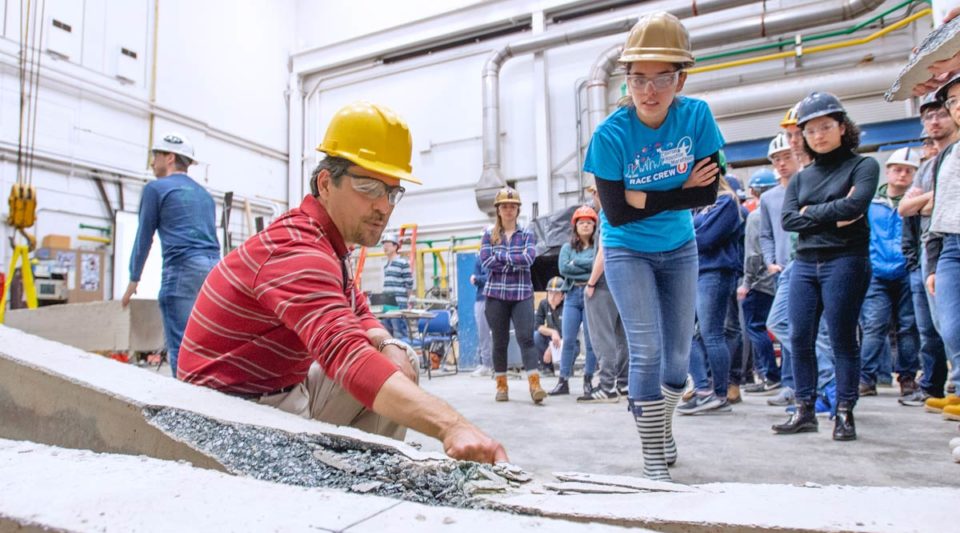A journal article by Yahya C. Kurama, professor of civil and environmental engineering and earth sciences; Theresa C. Aragon (ND Ph.D. 2018); and Donald F. Meinheit has won the Martin P. Korn Award from the Precast/Prestressed Concrete Institute.
The Korn Award recognizes a paper that offers the greatest contribution to the advancement of precast prestressed concrete technology in research and design.
The winning article, “Behavior of Ductile Short-Grouted Seismic Reinforcing Bar-to-Foundation Connections under Adverse Construction Conditions,” explores the ways in which connections between a precast concrete base — such as a column, wall, or bridge pier — and a structure’s foundation can increase the structure’s ability to withstand extreme loads while also lowering production, transportation, and construction costs.
“Precast concrete buildings and bridges are built by connecting prefabricated components in the field,” said Kurama. “The connections in a typical structure use thousands of steel reinforcing bars grouted into proprietary sleeves. This adds significantly to building costs.
“Our goal was to develop new connections that could allow reinforcing bars to be anchored over shorter grouted embedment lengths rather than the full embedment lengths prescribed by the American Concrete Institute’s Building Code Requirements for Structural Concrete.
“We found that using shorter lengths with the new connections could reduce the amount of field grouting necessary, a significant cost savings without using any proprietary components. This also provided a high structural safety performance under seismic loads.”
Kurama studies the behavior and design of concrete buildings under earthquake loading, structures under fire effects, and reinforced concrete materials for increased construction efficiency and sustainability.
This is the second time a paper he has written has been recognized with the Korn Award. In 2002, Kurama and Michael G. Allen’s paper, “Design of Rectangular Openings in Precast Walls under Combined Vertical and Lateral Loads,” presented a novel method for designing precast walls with large openings subject to combined vertical and lateral loads from post-tensioning, gravity, and earthquakes.
— College of Engineering
